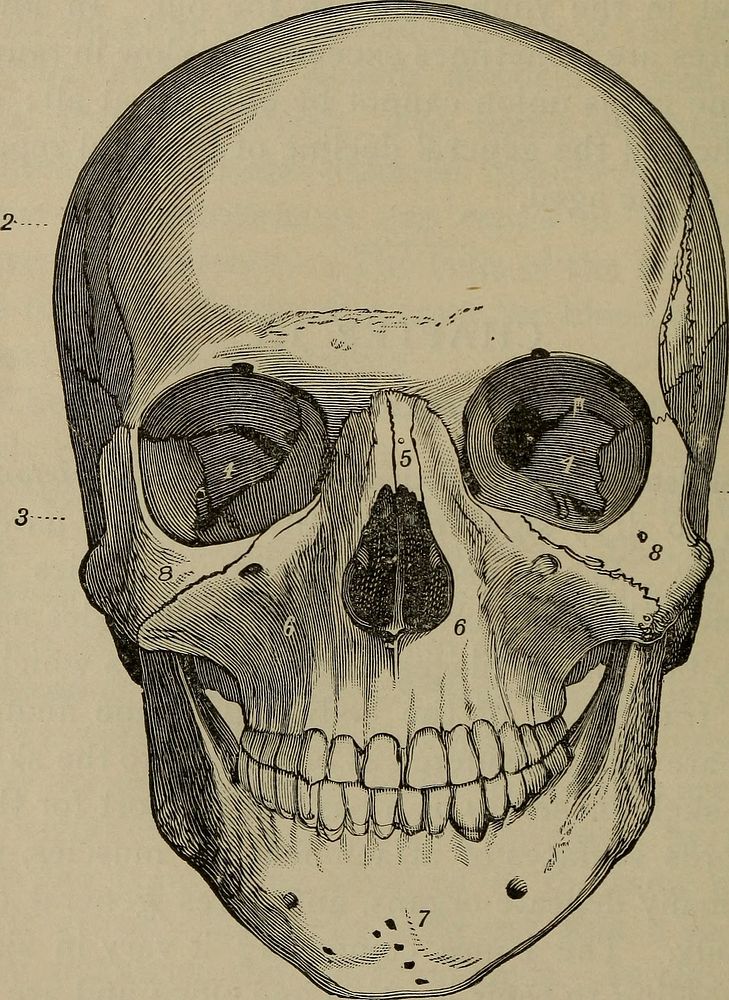https://creativecommons.org/publicdomain/zero/1.0/https://www.rawpixel.com/image/9976071

Identifier: academicphysio00bran (find matches)Title: An academic physiology and hygiene ..Year: 1903 (1900s)Authors: Brands, Orestes M. (from old catalog) Van Gieson, Henry C., (from old catalog) joint authorSubjects: Hygiene PhysiologyPublisher: Boston, B. H. Sanborn & coContributing Library: The Library of CongressDigitizing Sponsor: The Library of CongressView Book Page: Book ViewerAbout This Book: Catalog EntryView All Images: All Images From BookClick here to view book online to see this illustration in context in a browseable online version of this book.Text Appearing Before Image:lythe bones, but the cartilages and membranes which com-plete the framework of the body. By some anatomiststhe teeth are also considered as belonging to the skeleton. 2. The skeleton serves as a basis of support for the softparts, affords surfaces of attachment for muscles, protec-tion for many delicate organs, and gives general outlineto the body. The bones composing it vary in size andshape according to their location and office, and are boundtogether by fibrous bands, called ligaments. In the adultthere are about two hundred separate bones, not including i6 ACADEMIC PHYSIOLOGY. the teeth and the small bones of each ear. In the childthey are more numerous; and in the process of develop-ment of the skeleton, certain bones become united. 3. For convenience in classification the bones are di-vided into those of the heady trunk, the upper and the low-er extremities. The head has twenty-two bones, the trunkfifty-two, the upper extremities sixty-four, and the lowerextremities sixty-two. iText Appearing After Image:Fig. 2. — The Skull (Front View).i, frontal bone ; 2, parietal bones; 3, temporal bones; 4, portions of the sphenoid bones,forming the backs of the orbits of the eyes; 5, nasal bones; 6, superior maxillary bones;7, inferior maxillary bone; 8, malar or cheek bones. THE OSSEOUS SYSTEM. IJ 4. The Head. — The bones of the head are subdividedinto those of the cranium or skull, and those of the face;of the former there are eight, and of the latter fourteen. 5. The bones of the skull axe separate in infancy and child-hood ; but in the adult they become firmly united by irreg-ular, immovable joints called sutures (Lat. sutura, fromsucrc, to sew or stitch), and thus form a strong, roundedcase for the lodgement and protection of the brain and theorgans of the special senses. These bones have beennamed according to their shape or location, as follows :the occipital bone, at the back and base of the skull, con-tains an aperture for the passage of the upper part of thespinal cord, and sends ofNote About ImagesPlease note that these images are extracted from scanned page images that may have been digitally enhanced for readability - coloration and appearance of these illustrations may not perfectly resemble the original work.
Original public domain image from Wikimedia Commons
Public DomainFree CC0 image for Personal and Business use